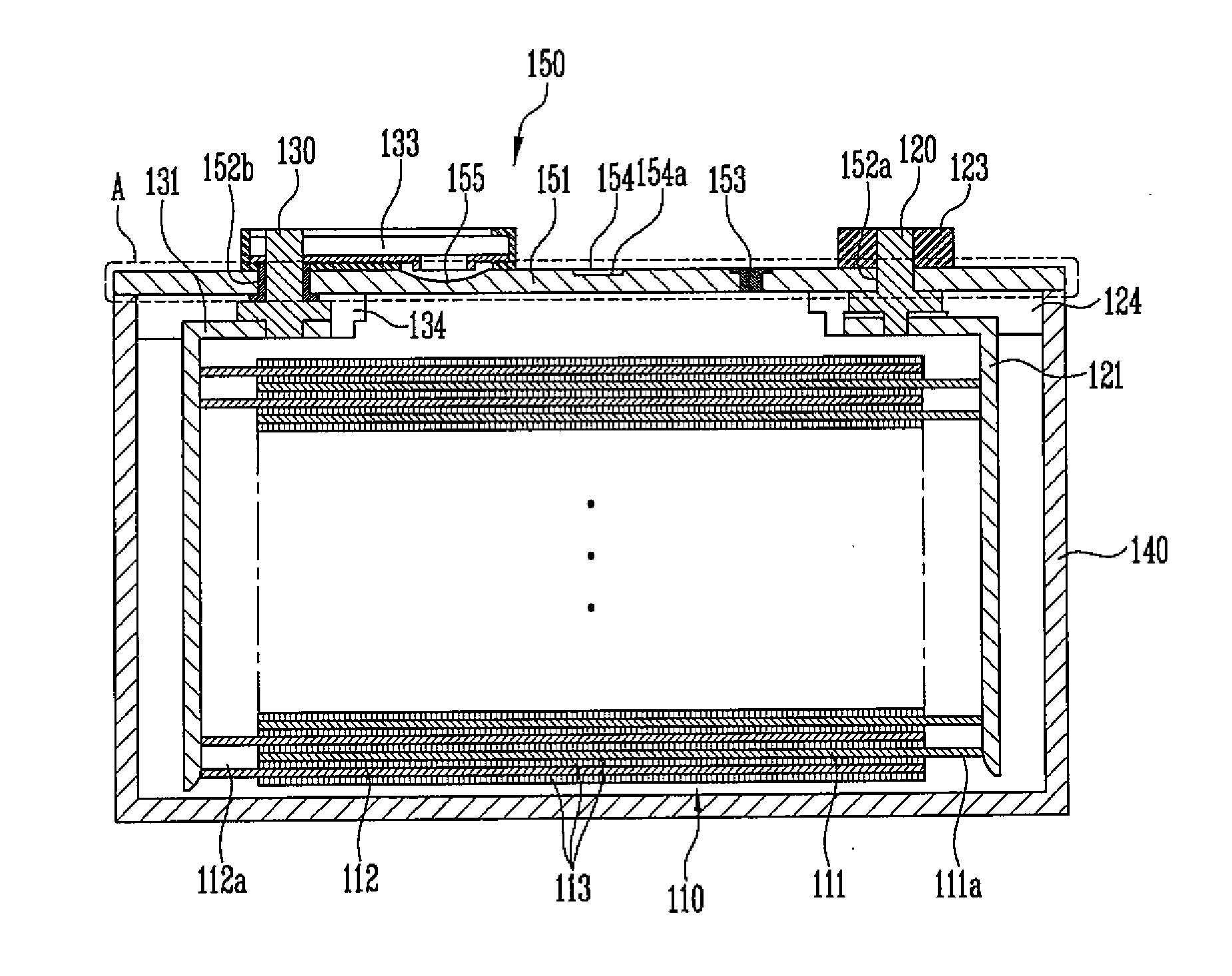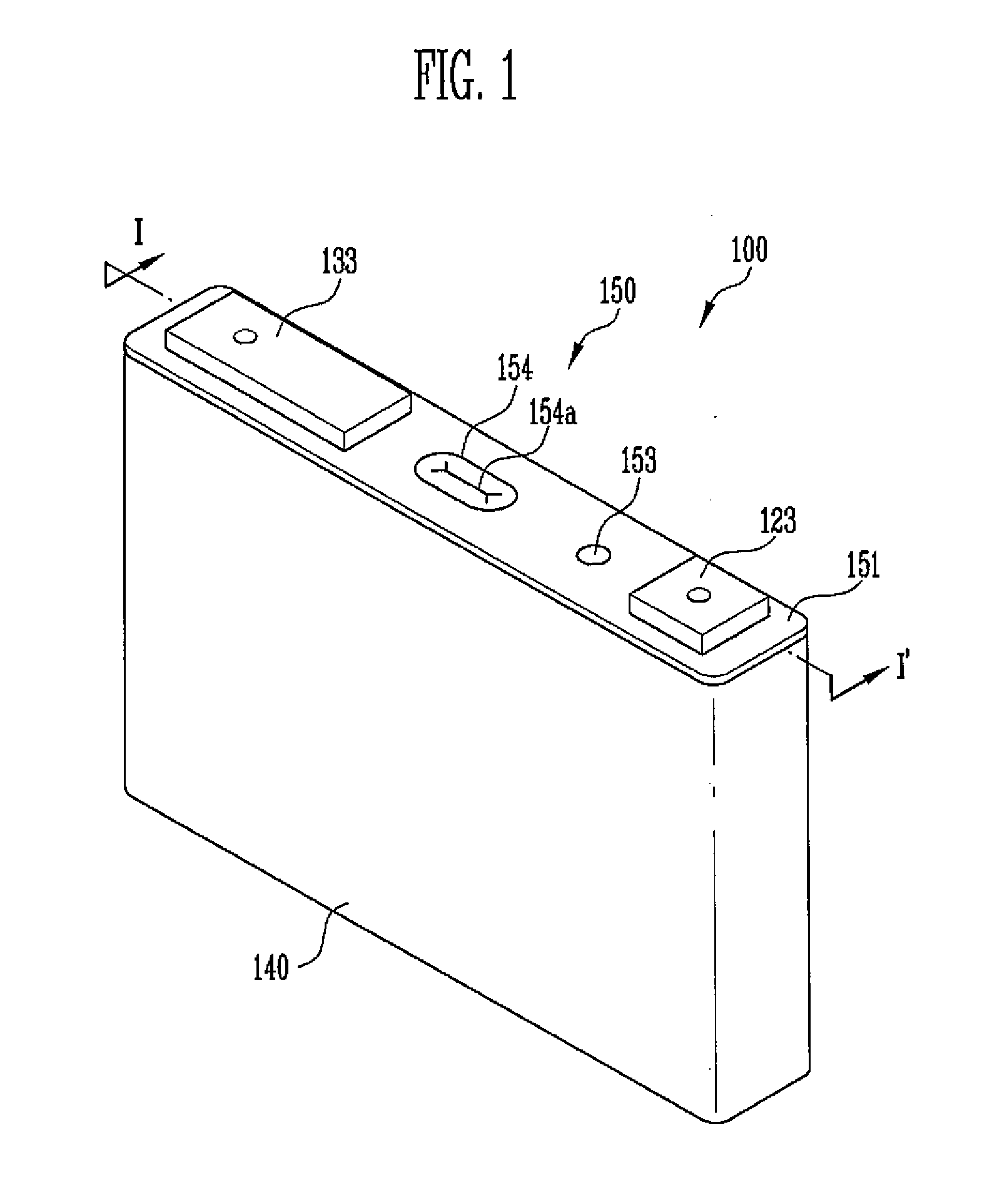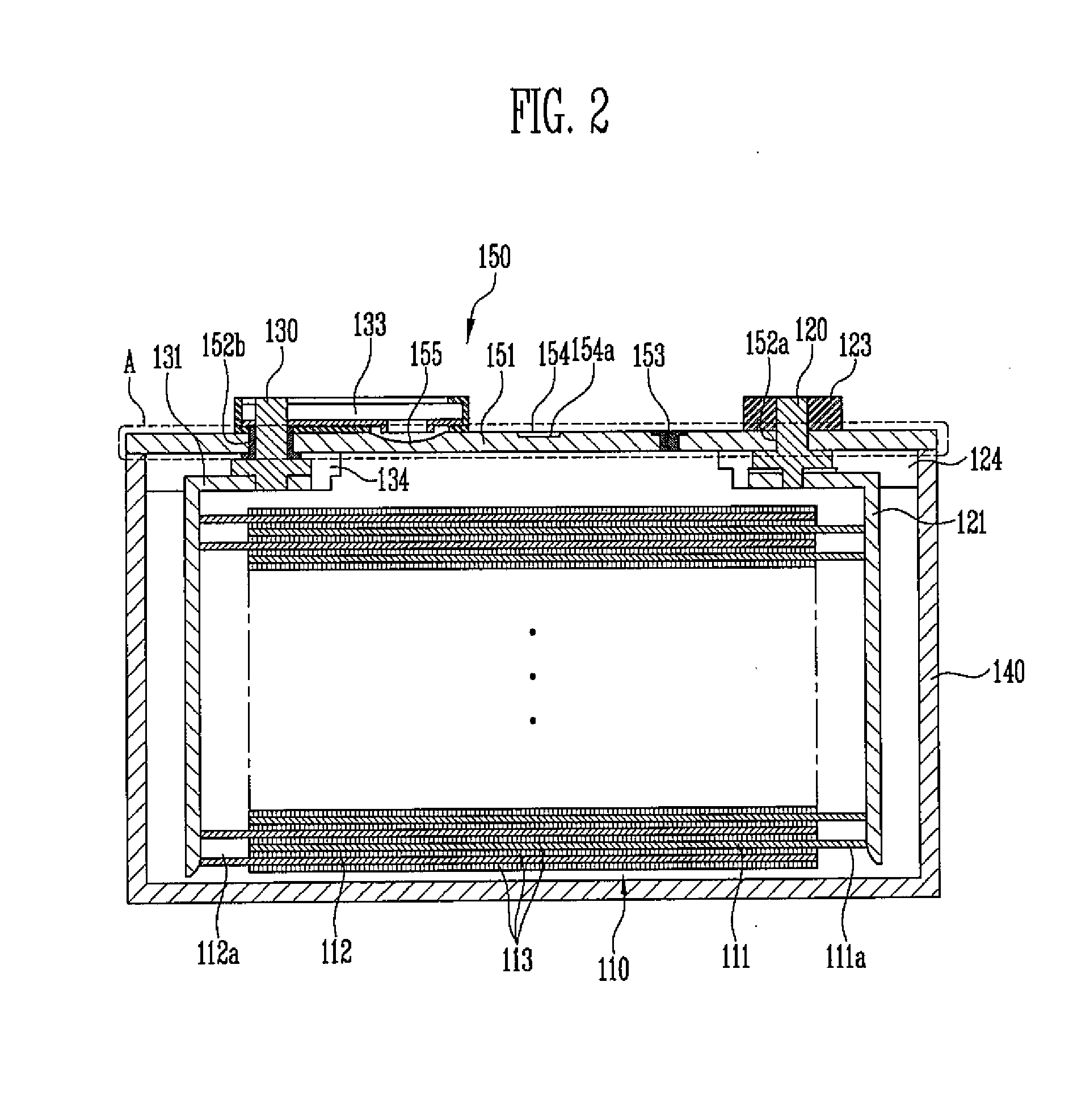Secondary battery and manufacturing method thereof
- Summary
- Abstract
- Description
- Claims
- Application Information
AI Technical Summary
Benefits of technology
Problems solved by technology
Method used
Image
Examples
Embodiment Construction
[0039]The invention will be described more fully hereinafter with reference to the accompanying drawings, in which example embodiments of the inventions are shown. This invention may, however, be embodied in many different forms and should not be construed as limited to the embodiments set forth herein.
[0040]Other and further objects and features of the invention will be apparent from the following description taken in connection with the accompanying drawings.
[0041]Hereinafter, the configuration of the present invention will be described with reference to the accompanying drawings.
[0042]FIG. 1 is a perspective view showing the appearance of a secondary battery 100 according to an embodiment of the present invention, FIG. 2 is a sectional view taken along line I-I′ of FIG. 1, and FIG. 3 is an enlarged view of portion A marked in FIG. 2.
[0043]As shown in FIGS. 1 and 2, the secondary battery 100 includes an electrode assembly 110, a case 140, and a cap plate 151. The electrode assembl...
PUM
| Property | Measurement | Unit |
|---|---|---|
| Temperature | aaaaa | aaaaa |
| Temperature | aaaaa | aaaaa |
| Temperature | aaaaa | aaaaa |
Abstract
Description
Claims
Application Information
 Login to View More
Login to View More - R&D
- Intellectual Property
- Life Sciences
- Materials
- Tech Scout
- Unparalleled Data Quality
- Higher Quality Content
- 60% Fewer Hallucinations
Browse by: Latest US Patents, China's latest patents, Technical Efficacy Thesaurus, Application Domain, Technology Topic, Popular Technical Reports.
© 2025 PatSnap. All rights reserved.Legal|Privacy policy|Modern Slavery Act Transparency Statement|Sitemap|About US| Contact US: help@patsnap.com



